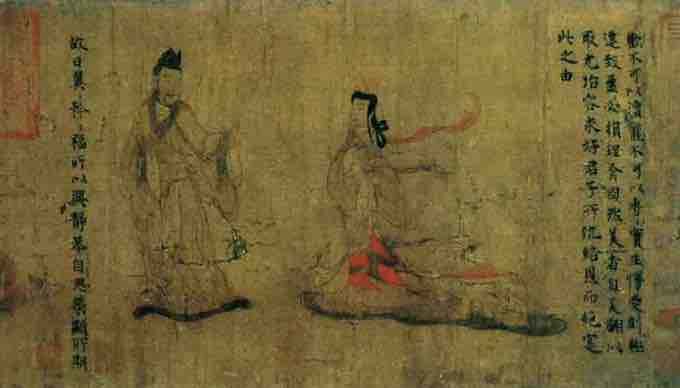Background: Calligraphy and Ancient China
Calligraphy is a visual art related to writing; it is the design and execution of lettering with a broad tip brush or other writing instrument. The calligraphic tradition of East Asia originated and developed in China, and Chinese calligraphy is a widely practiced form of calligraphy revered in the Sinosphere (which often includes China, Japan, Korea, and Vietnam). The various styles of calligraphy in the tradition adhere to a general standardization. Chinese calligraphy and ink and wash painting are closely related, as they are accomplished using similar tools and techniques. Chinese painting and calligraphy distinguish themselves from other cultural arts because they emphasize motion and tend to be charged with dynamic life.
In ancient China, painting and calligraphy were the most highly appreciated arts in court circles; they were done almost exclusively by amateurs, aristocrats, and scholar-officials who had the leisure to perfect the technique and sensibility necessary for great brushwork. Calligraphy was thought to be the highest and purest form of painting. The implements of calligraphy included the brush pen made of animal hair and black inks made from pine soot and animal glue. Writing and painting were done on silk until this was gradually replaced by the invention of paper in the 1st century. Original writings by famous calligraphers have been greatly valued throughout China's history; they are mounted on scrolls and hung on walls in the same way paintings are.

Palace Lady detail from Admonitions of the Instructress to the Palace Ladies
In ancient China, painting and calligraphy were the most highly appreciated arts in court circles; they were done almost exclusively by amateurs, aristocrats, and scholar-officials who had the leisure to perfect the technique and sensibility necessary for great brushwork.
Calligraphy during the Six Dynasties
Some of the most famous Chinese calligraphers lived during the Six Dynasties period. The Six Dynasties refers to the dynasties during the periods of the Eastern Wu Dynasty (222–280), Jin Dynasty (265–420), Liu Song Dynasty (420–479), Southern Qi Dynasty (479–502), Liang Dynasty (502–557), and Chen Dynasty (557–589).
Wang Xizhi and the Lanting Xu
One of these famous calligraphers was Wang Xizhi, who lived during the 4th century CE in the middle of the Jin Dynasty. His most famous work is the Lanting Xu, the preface to a collection of poems written by a number of poets who gathered at Lan Ting, near the town of Shaoxing in Zhejiang province. Wang Xizhi was traditionally referred to as the Sage of Calligraphy, and he is considered by many to be one of the most esteemed Chinese calligraphers of all time and a master of all forms of Chinese calligraphy, especially the running script. The Emperor Taizong admired his works greatly; in addition to the esteem he held in China, he has been and remains influential in Japanese calligraphy.
The Lantingji Xu is a famous work of calligraphy by Wang Xizhi, composed in the year 353 CE. Written in semi-cursive script, it is among the best known and often copied pieces of calligraphy in Chinese history. This work began as the preface to a collection of poetry seminal to the Chinese nature poetry movement but developed a life of its own. The preface describes the event during that year's Spring Purification Festival in which 42 literati, including Xie An and Sun Chuo, were present at a gathering at the Orchid Pavilion near Shaoxing, Zhejiang, at which they composed poems, played music, and enjoyed wine. The preface consists of 324 Chinese characters in 28 lines. The character zhī (之) appears 20 times, but no two look the same, which is considered one of the features of this work that constitute its calligraphic excellence. This celebrated work of literature both flows rhythmically and gives rise to several Chinese idioms.
Main text of a Tang Dynasty copy of Wang Xizhi's Lantingji Xu, by Feng Chengsu.
Throughout Chinese history, many copies were made of the Lantingji Xu, which described the beauty of the landscape around the Orchid Pavilion and the get-together of Wang Xizhi and his friends. The original is lost; however, some believed that it was buried in the mausoleum of Emperor Taizong of Tang. This Tang copy made between 627-650 CE is considered the best of the copies that has survived.